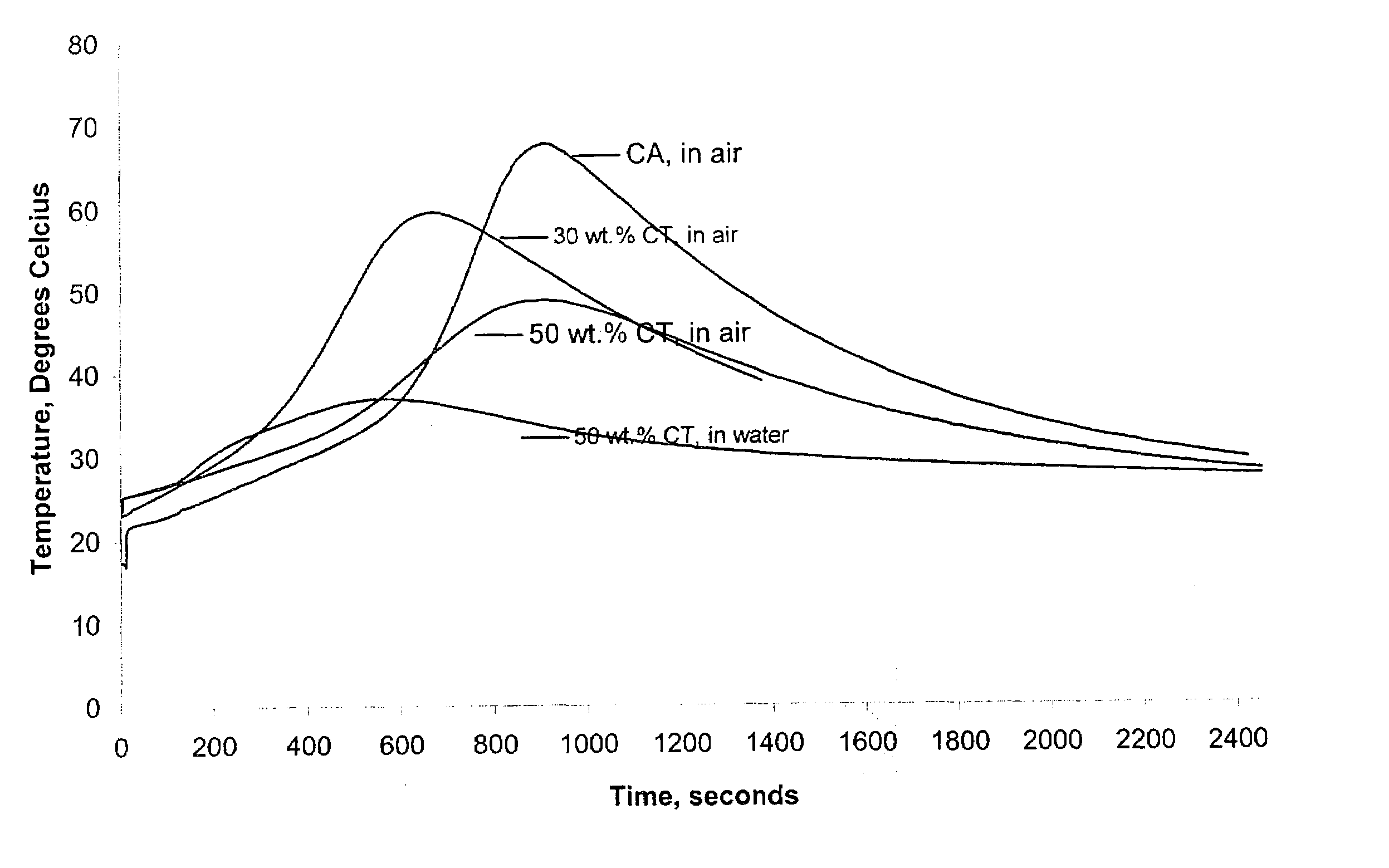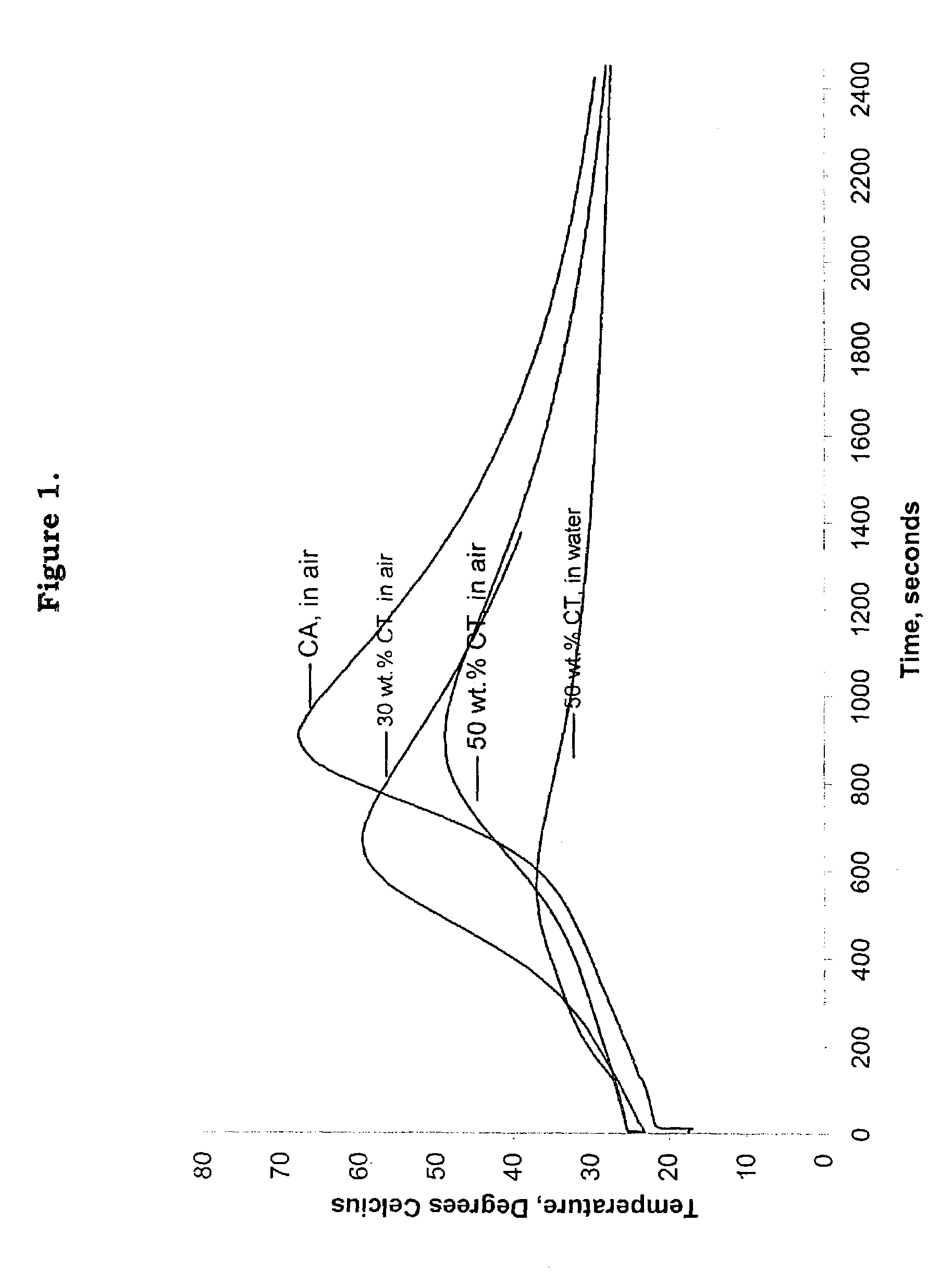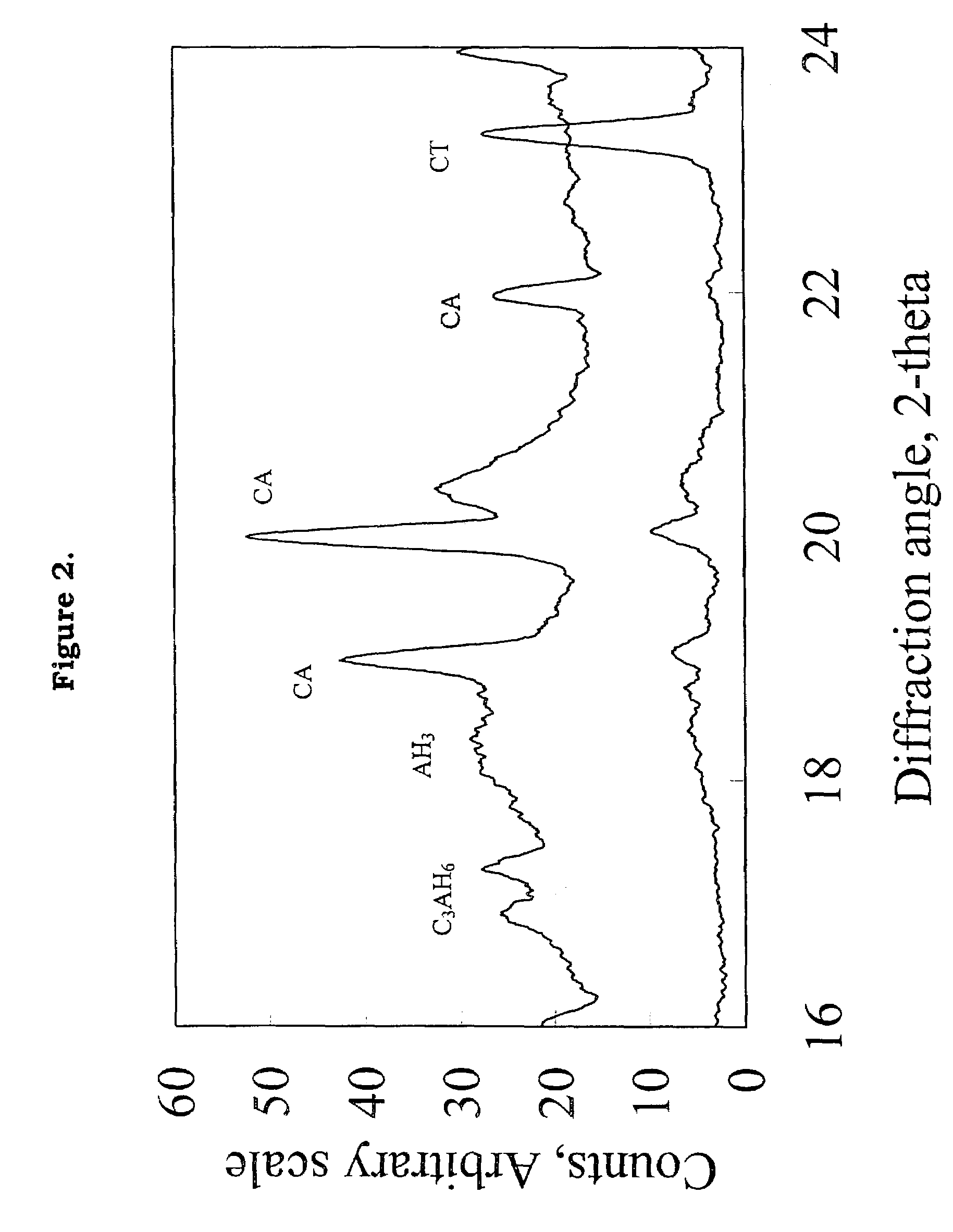Ceramic material and process for manufacturing
a technology of ceramic materials and manufacturing processes, applied in the field of ceramic materials, can solve the problems of poor biocompatibility of pmma-based cements, inability to establish tissue in growth, and material tends to leak monomers, so as to reduce the risk of aluminium leakage, reduce the amount of aluminium present, and reduce the extent of formation
- Summary
- Abstract
- Description
- Claims
- Application Information
AI Technical Summary
Benefits of technology
Problems solved by technology
Method used
Image
Examples
example 1
[0072]This example describes the manufacturing procedure of ceramic materials consisting of hydrated calcium aluminate with various amounts of calcium titanate, and the mechanical properties of these materials.
[0073]As raw material, the commercial product Ternal White® from Lafarge Aluminates, was selected. This is a calcium aluminate with an Al2O3 / CaO-ratio of about 70 / 30. However, any other similar calcium aluminate powder would lead to similar results.
[0074]The grain size of this powder was reduced my ball milling. The milling reduced the size of 90% of the grains to less than 10 μm.
[0075]The milling was performed with a rotating cylindrical plastic container filled with ⅓ of its volume with powder, and about ⅓ of its volume with inert silicon nitride milling spheres having a diameter of about 10 mm. The milling liquid was iso-propanol. The total milling time was 3 days.
[0076]After milling, the milling bodies were removed by sieving and the alcohol was evaporated. Thereafter the ...
example 2
[0083]This example describes materials of hydrated CA with various amounts of calcium phosphate, and their mechanical properties.
[0084]CA powder of the type Ternal White from Lafarge Aluminates was prepared following the same procedure as in Example 1.
[0085]To this powder, a calcium phosphate powder (Ca5(PO4)3OH) from the company Carl Roth GmbH+Co Karlsruhe, with a similar grain size as the CA, was added in proportions of 10, 20 and 50 wt. %. A similarly prepared CA without phosphate additives was used as reference. The same agents as in example 1 were added to the water. The w / c-ratio was set to 0.4, as related to the powder weight.
[0086]As in example 1, the powder-water mixtures were cured in containers holding about 10 g of material, in an environment saturated with water, at 37° C.
[0087]The hardness results are presented in table 3. As can be seen, a positive effect on the hardness of the calcium phosphate additive is achieved after two weeks of curing. Additions of calcium phos...
example 3
[0089]This example serves to illustrate that an addition of calcium titanate, CT, can be used to reduce the temperature generation during curing of CA. CA powder of the type Ternal White from Lafarge Aluminates was prepared following the same procedure as in Example 1. Powder mixtures with 30 wt. % and 50 wt. % of titanate were prepared as well.
[0090]The powder mixtures are mixed with de-ionised water, keeping the ratio of the weight of the water to the weight of the CA powder constant at 0.5.
[0091]For all powder mixtures, an accelerator in the form of the Li-salt, LiCl was added to the de-ionised water. This increased the curing time to about 10 minutes. To illustrate the effect of the surrounding medium, the curing was performed in air and in water.
[0092]The water-powder mixtures are cured in plastic containers, each holding about 10 g of the mixtures. During curing of the ceramics, the temperature in the centre of the ceramic bodies was measured with a thermocouple. The developme...
PUM
| Property | Measurement | Unit |
|---|---|---|
| Grain size | aaaaa | aaaaa |
| Temperature | aaaaa | aaaaa |
| Fraction | aaaaa | aaaaa |
Abstract
Description
Claims
Application Information
 Login to View More
Login to View More - R&D
- Intellectual Property
- Life Sciences
- Materials
- Tech Scout
- Unparalleled Data Quality
- Higher Quality Content
- 60% Fewer Hallucinations
Browse by: Latest US Patents, China's latest patents, Technical Efficacy Thesaurus, Application Domain, Technology Topic, Popular Technical Reports.
© 2025 PatSnap. All rights reserved.Legal|Privacy policy|Modern Slavery Act Transparency Statement|Sitemap|About US| Contact US: help@patsnap.com



